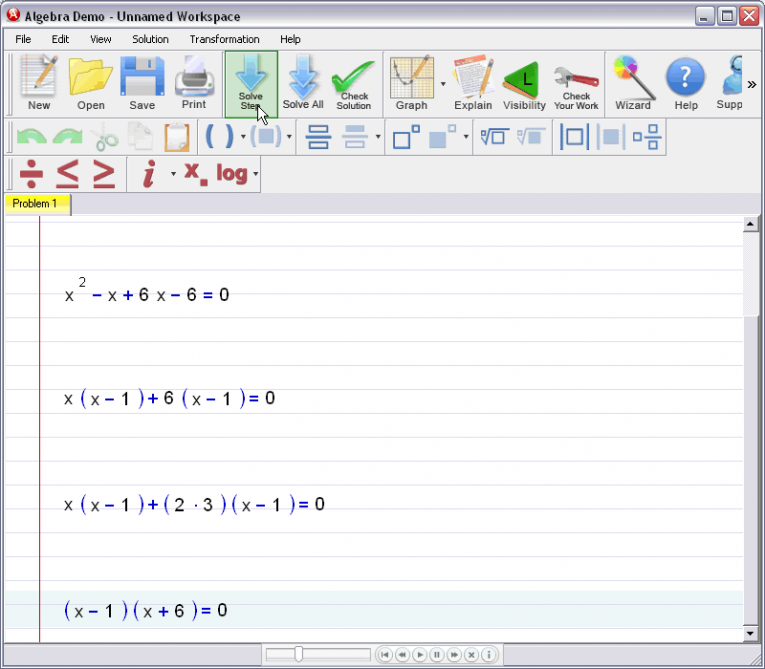Solving Quadratic Equations By Using The Quadratic Formula
Objective Introduce the Quadratic Formula and learn how to use it to solve quadratic equations.
In this lesson, you will use the Quadratic Formula to solve quadratic equations. The goal is that you become comfortable using this formula. This will require lots of practice, and so you should pay special attention to the examples.
The Quadratic Formula
The solutions of a quadratic equation in the form ax
2 + bx + c = 0, where a ![]() 0, are given by the formula
0, are given by the formula ![]() .
.
This formula can be used to find the solutions to any quadratic equation.
Notice the ![]() sign in the formula. This means that there may be two
solutions to a quadratic equation. Recall that a parabola intersects
the x -axis in two places, the corresponding equation has two
solutions. This corresponds to the two solutions
sign in the formula. This means that there may be two
solutions to a quadratic equation. Recall that a parabola intersects
the x -axis in two places, the corresponding equation has two
solutions. This corresponds to the two solutions ![]() .
.
The expression inside of the square root, b 2 -
4ac, is called the discriminant. When the discriminant
is positive, there are two distinct solutions. When this expression
is zero, the square root in the Quadratic Formula is zero, and
then there is only one solution, ![]() . This corresponds to the parabola intersecting
the x -axis in only one point, namely the vertex. The final
case is when the discriminant b 2 - 4ac is negative,
in which case the square root
. This corresponds to the parabola intersecting
the x -axis in only one point, namely the vertex. The final
case is when the discriminant b 2 - 4ac is negative,
in which case the square root ![]() is not defined. In this case, there
are no real solutions to the quadratic equation. This corresponds
to the parabola not intersecting the x-axis at all. A variety of
algebra solvers can help you solving problems like this one
is not defined. In this case, there
are no real solutions to the quadratic equation. This corresponds
to the parabola not intersecting the x-axis at all. A variety of
algebra solvers can help you solving problems like this one
| Solutions of the Quadratic Equation ax 2 + bx + c = 0 | |||
| Discriminant | b 2 - 4ac > 0 | b 2 - 4ac = 0 | b 2 - 4ac < 0 |
| Number of Solutions | 2 |
1 |
0 |
| Example |
|
|
|
| Parabola Intersects the x-axis | yes, in two distinct points | yes, in exactly one point, the vertex | no |
How Can Algebrator Help You With This Problem?











